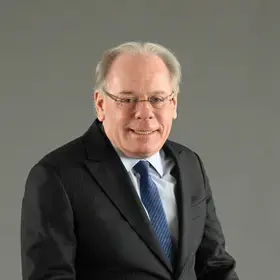“How do we come up with innovative ideas, and how do we bring them forth in the marketplace?” That’s the central question that Ozioma Egwuonwu explores in the class she teaches for the M.S. program in Strategic Communication – Developing and Implementing Ideas.
Egwuonwu, who previously worked at the renowned global communications agency network Saatchi & Saatchi, brings not just theory but practice to the classroom. “That's what differentiates this class more than anything else. It's not just about discussing ideas. It's really about how we actually launch them and make them viable.”
In addition to teaching, she’s a consultant and independent business owner whose strategy and coaching firm is called BurnBright International. The concept she created, World Dream Day, an initiative aimed at helping the world reach its full potential, has been featured on FOX, NBC, TEDx, and more.
Here, we speak with Egwuonwu about how the communications landscape is changing and how tracking ideas can lead to insights – and jump-start a career.
Tell me about the course that you teach.
It’s called Developing and Implementing Ideas. It’s my fourth year teaching this class. We look at the context of modern day communications from a variety of perspectives. We also engage many of the cutting-edge techniques that arise from design thinking and design strategy and are utilized in the world of communications. We look at cultural strategy. We look at digital strategy and innovation. But we also look at classical approaches. It's a mashup of classical and emerging methods of communications.
The differentiating aspect of this particular class is that the students get a chance to create their own integrated marketing plan; not only do they learn about these concepts, but they also get to actually develop and implement their own ideas and use it as a platform for their own careers.
You talked a little bit about exploring how communications have changed. Can you tell us more about that?
The communications landscape has completely transformed from what it was even five years ago. Things are faster, more complex, more integrated. Technology’s role developing and distributing communication ideas and experiences has completely changed.
Communications itself has risen to the forefront as the differentiating element of many initiatives. If you have an idea but you don't know how to market it and communicate it, no one will ever know about it. That's why the communications discipline is so important to study.
In the class that you teach, what are your favorite lessons or projects?
Every student creates what's known as an ideas portfolio. For the entire semester, they take a concept – for instance, hashtags. They chart it over the course of several months. What kinds of articles are being written about it? How are brands using it? Students get to develop their critical thinking skills through the development of this portfolio.
Many of the students have presented and shared their portfolios as a platform to help them land different jobs. It's a project that’s also a career-enhancement tool.
What kinds of students do you have in your class? What are their goals, and in what ways do the students evolve in this class?
The class itself is for people from a variety of different backgrounds, so it really runs the gamut. We have students who wish to focus on everything from social innovation and social entrepreneurship to digital and social media strategy to classical brand-building and brand strategy. The students aspire to be independent business owners or marketing managers – you name it.
Is there anything else that you wanted to add?
Well, what's the ultimate objective? The ultimate objective of the class and of the program is to develop the minds and the acumen of students so that they can engage at a competitive level in the world of communications. Everything that we do in the class is geared towards giving students a taste of what it's really like to be a communications professional. We focus on theory, but more importantly, we focus on practice.


